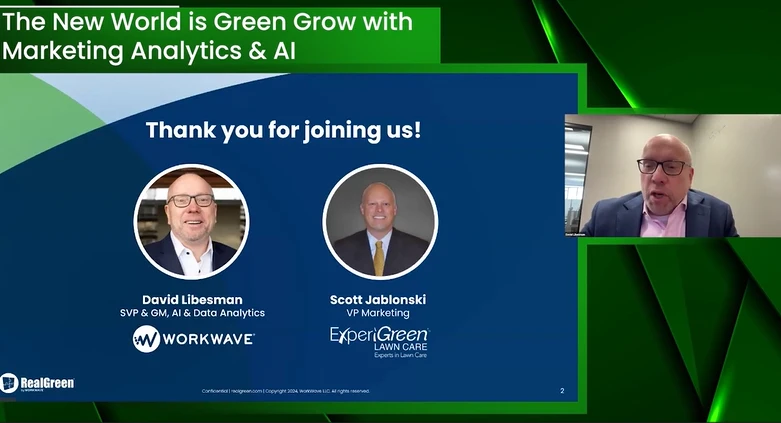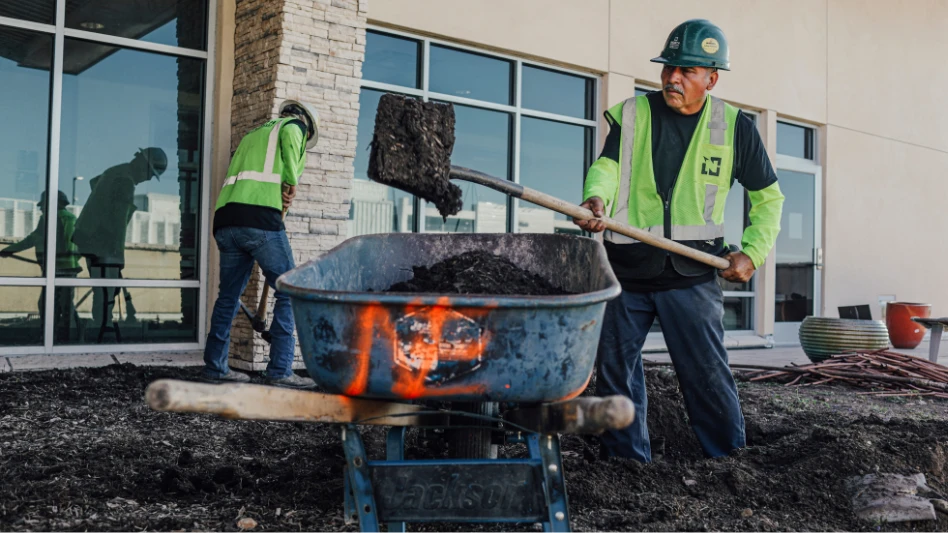
 Hard to believe, but spring is only a couple months away. Your customers’ lawns will be in dire need of seed or sod as they recover from the summer drought and winter conditions.
Hard to believe, but spring is only a couple months away. Your customers’ lawns will be in dire need of seed or sod as they recover from the summer drought and winter conditions.
While you have downtime during the winter months, you should prepare for customer requests and determine how you can make the seed and sod selection process easier, faster and more productive. We spoke with distributors and suppliers and developed a checklist of questions you should have in hand when you make next year’s purchases.
Clients. The first conversation should take place between you and your client: What type of grass do they want? How long are they willing to wait for it to grow? Do they want a high-end upkeep or low maintenance property?
“If you’re already talking to the end user upfront and know what the outcome of the property is that they want, that just makes the process flow a little bit easier,” says Lee H. Smith, turf and agronomic sales at Ewing.
Second, perform research before you head to your supplier. New varieties are always introduced and more and more seed and sod is being produced in hybrid forms for drought-tolerant and heat-tolerant conditions. State university extension offices and turfgrass associations offer access to the latest research and recommendations on the varieties that are best suited for your region.
Supplier. Now you have an idea of what you might want to purchase and you’re armed with questions to ask your supplier.
The first bit of information you should share with your supplier is what you’re planting. “The application is important,” says Evelyn Dennis, category manager for seed at John Deere Landscapes. “Are you planting an athletic field, home lawn, commercial lawn? What kind of traffic is there going to be? Is there sun? Is there shade? Is there a combination of the two? Also, what maintenance levels will be practiced?”
Next you should ask about the amount of water needed for the seed or sod to mature and whether an irrigation plan should be established.
Finally, what soil prep needs to be done before the application is set? At minimum, the soil needs to be raked and cleared of debris before seed is thrown down. When it comes to sod, you have to make sure the soil is compatible to the soil on which the turf was grown.
“The biggest misconception is a lot of landscapers think it’s just dirt,” Nick DiLorenzo, landscape division specialist at Horizon Distributors, says about soil. “The first thing that landscapers need to ask their supplier is: What is in the dirt? Do you provide soil testing?”
By now, the options should be narrowed. With a shortage in the seed and sod market in recent years, the next question should be availability.
“I think availability is the main key because the seed market fluctuates so rapidly,” Smith says. “If they need something quick, how quickly can I get this product? Then you may start looking at how good the product is.”
Tags. Once you’re debating a select number of varieties, it’s time to review the seed tags. It’s a red flag if the product doesn’t have a seed tag. The seed variety will differ between suppliers, so items to check for on the tag include: pure live seed count, germination rate, organic matter percentage and types of weeds in the bag.
“I think it’s important to buy seed products with all the varieties named,” Dennis says.
Careful analysis might require reading the tag and then returning to the office to do more research. A trusted dealer should steer you in the right direction.
“Buying a quality product saves you time and money in the long run,” says Michelle Williams, account manager for turfgrass sod sales at John Deere Landscapes. “Contractors don’t want call backs.”
|
Purchasing certified seed is important to ensure the product’s quality. The seed tag can come in a number of colors and provide different information. Jim Novak, public relations manager at Turfgrass Producers International, describes in his own words what each tag means.
|
The writer is a freelancer based in Lakewood, Ohio.
Get curated news on YOUR industry.
Enter your email to receive our newsletters.

Explore the December 2012 Issue
Check out more from this issue and find your next story to read.
Latest from Lawn & Landscape
- Ever-changing landscape of SEO
- Fleetio acquires Auto Integrate, raises $450M in Series D funding
- Davey Tree expands in St. Paul, promotes Ostlie to district manager
- Schill Grounds Management taps 3 for senior leadership roles
- HD Hyundai Construction Equipment North America adds to wheeled excavator lineup
- High maintenance
- From Design to Proposal: Estimating and Rendering Support Services
- PERC adds Joel Stutheit as senior manager of business development
 What’s with the different colored tags?
What’s with the different colored tags? 




